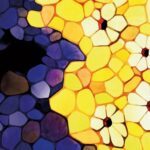About
Cell Death and Epithelial Homeostasis (Department of Developmental and Stem Cell Biology) – Romain Levayer
Our unit is deciphering the multilayered regulation of epithelial cell death, from the role of mechanical stress, local and global feedback to the single cell decision to die downstream of caspases activation. Using a combination of quantitative live imaging, machine learning, optogenetics, genetics and modeling in Drosophila, we are testing how the fine tuning of cell death can impact tissue growth, tissue morphogenesis and generate competitive interactions between pre-tumoural cells and their WT neighbours.
Membrane Biochemistry and Transport (Department of Cell Biology & Infection) – Thomas Wollert
Adult stem cells are responsible for tissue regeneration and maintenance. However, some stem cell populations are escaping the cell cycle to enter a quiescent state. These quiescent stem cells reside in the tissue without participating in its regeneration or maintenance. Well know examples of such stem cells include adult neural stem cells that could drive neurogenesis if activated, or cancer stem cells that lead to relapse of cancer when activated. Autophagy is a major cellular recycling pathway that degrades protein aggregates and organelles, including mitochondria. The activity of autophagy depends on the physiological state of stem cells by currently not well understood mechanisms. We are interested in deciphering the interdependence of autophagy and stem cell quiescence using adult neural stem cells and cancer stem cells as a model. Our goal is to use autophagy to control stem activity.
Stem Cells and Development (Department of Developmental and Stem Cell Biology) – Shahragim Tajbakhsh
Our lab investigates multiple aspects of stem cell biology in the context of development, growth, regeneration, ageing and disease. The focus is on skeletal muscle using genetically modified mice. The context of prenatal and postnatal development is examined in mouse, and processes are considered in an evolutionary context. Basic cellular processes including cell quiescence, modes of proliferation (symmetric/asymmetric) and lineage progression in normal and pathological conditions are being investigated. Pathology models include those that perturb muscle function (ex. Myopathies) or indirectly (ex. influenza virus infection; cancer cachexia).
Zebrafish Neurogenetics (Department of Developmental and Stem Cell Biology) – Laure Bally-Cuif
Our team studies the principles and mechanisms that control the formation, maintenance, and recruitment of neural stem cells (NSCs) in the adult vertebrate brain. We investigate fundamental NSC decisions such as the quiescence-proliferation balance, the choice of cell division mode, and lineage progression towards the generation of neurons. Our main model system is the telencephalon of the adult zebrafish, where NSCs are numerous and easily accessible for experimentation in vivo; and our approaches include functional genetics, lineage tracing, intravital imaging, quantitative image analysis and modeling. When molecularly relevant, we extend to human brain organoids to probe the function of candidate pathways in human neural progenitor cells.
Evolutionary cell biology and evolution of morphogenesis (Departments of Cell Biology and Infection & Developmental and Stem Cell Biology) – Thibaut Brunet
Just like the diversity of cell types in the human body arises by proliferation and differentiation of totipotent stem cells, the diverse cell types of the animal kingdom have diversified in evolution from a single ancestral cell type – a unicellular eukaryote that lived in ancient aquatic environments and was our latest single-celled ancestor. We study choanoflagellates, the closest unicellular living relatives of animals, to reconstruct the properties of that ancestor and to understand how the mechanisms determining cell fate and phenotypes have evolved.
Human Developmental Genetics (Department of Developmental and Stem Cell Biology) – Ken McElreavey
We are creating human organoids that precisely mimic the in vivo specification and differentiation of the human gonads (ovary or testis) from pluripotent stem cells. These gonadal organoids are used to determine gene regulatory networks involved in regulation of reprogramming, cell fate choice as well as tissue and organ formation. We use these models to study naturally-occuring genetic variants that cause gonadal disease (sex-reversal; physiological tissue homeostasis and its alterations) and how these genetic variants cause tissue/organ remodelling. We have developed these technologies ourselves in the unit from human iPSCs – organoids, gonad on a chip (the later in collaboration with Samy Gobaa).
Epigenomics, Proliferation and the Identity of Cells (Department of Developmental and Stem Cell Biology) – Pablo Navarro Gil
Stem cells derived from early mouse embryos pose a number of exciting questions and unsolved issues that challenge our understanding of the fundamental mechanisms underlying gene regulation. These cells are typically able to self-renew, calling into play mechanisms to ensure the persistence of transcriptional states through replication and mitosis, but also present unparalleled differentiation potential, requiring increased plasticity and capabilities to implement new transcription profiles. We employ omic strategies combined with other molecular, cellular and embryo-based assays to understand how transcription factors and chromatin properties achieve these seemingly opposing requirements.
Nuclear Organization and Oncogenesis (Department of Cell Biology & Infection) – Anne Dejean
We are investigating chromatin and post-translational mechanisms that govern normal and pathological cell fate decisions, focusing mainly on early embryo development and cancer. Leveraging recently developed in vitro models of early embryos, our goal is to identify novel regulators of cell fate commitment through perturbation screening approaches. This should hopefully lead to a better understanding of the genetic programs underlying normal and altered developmental processes.
